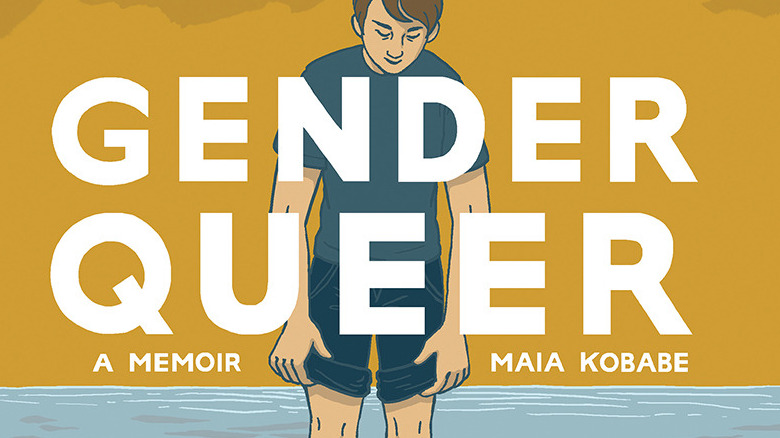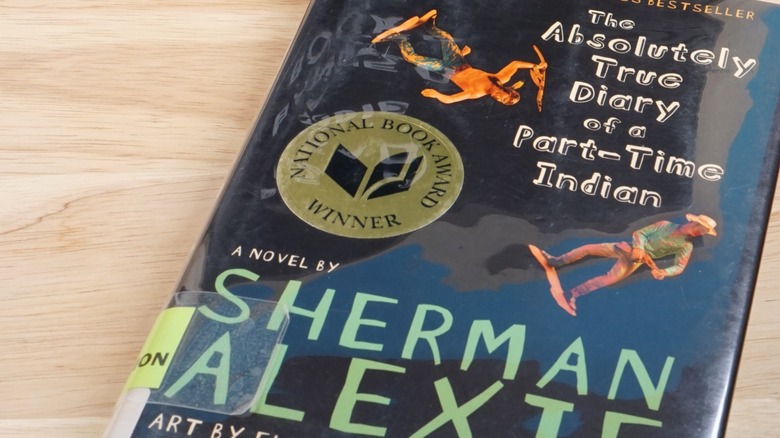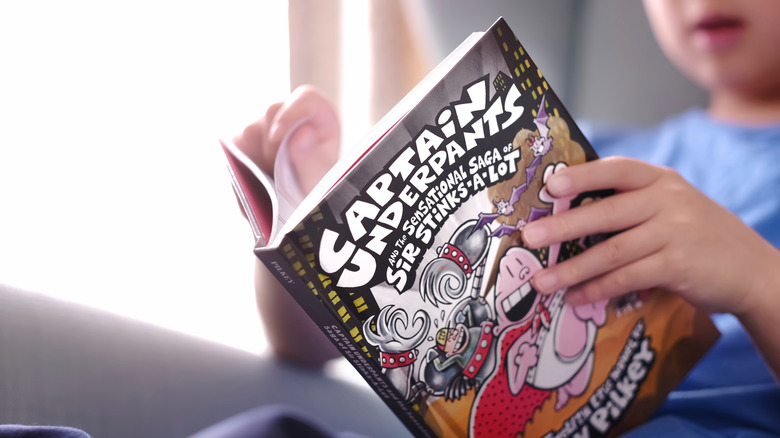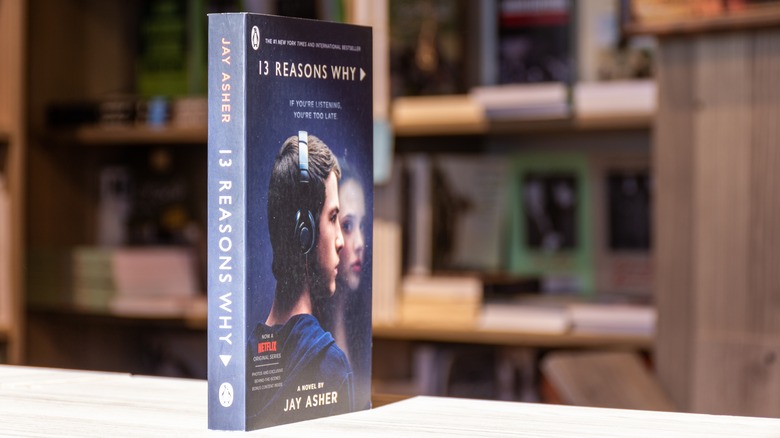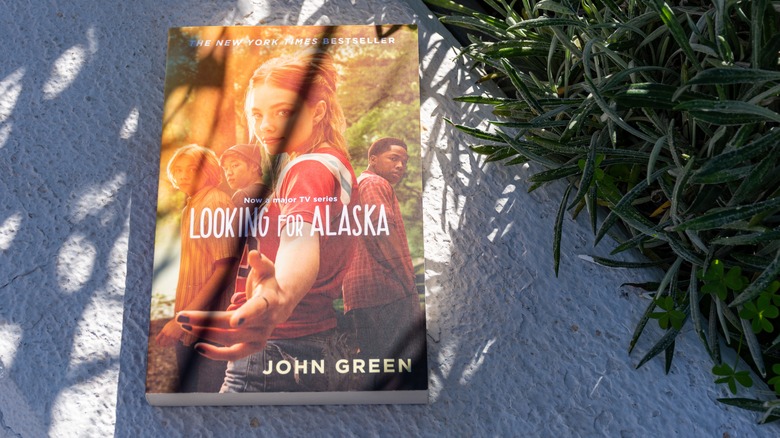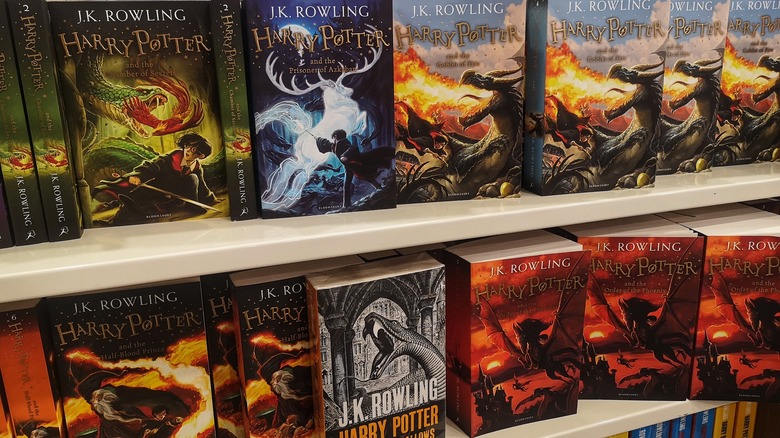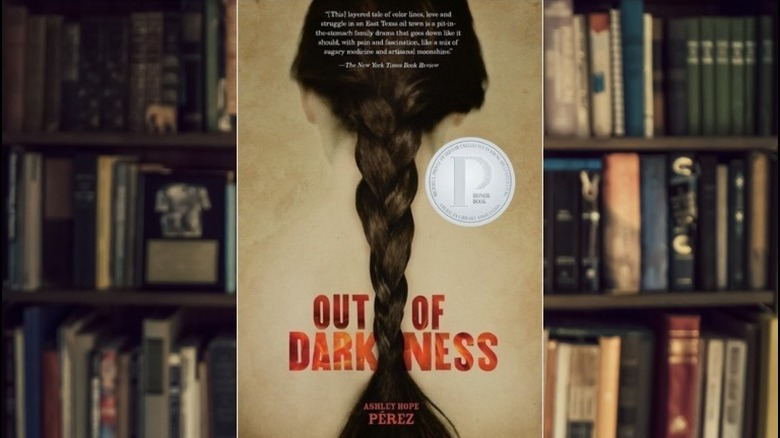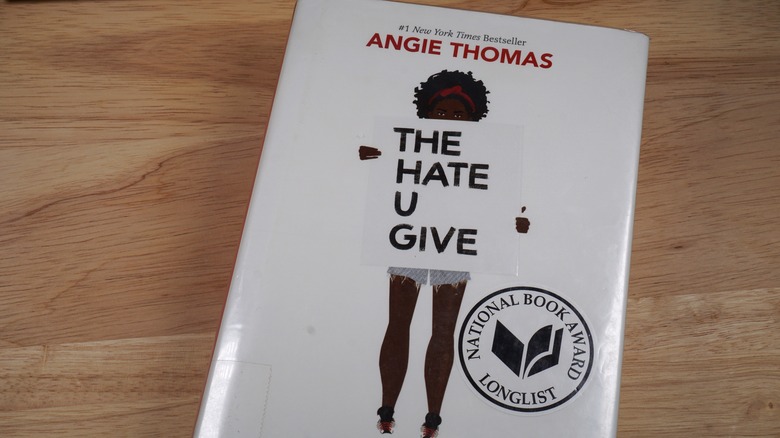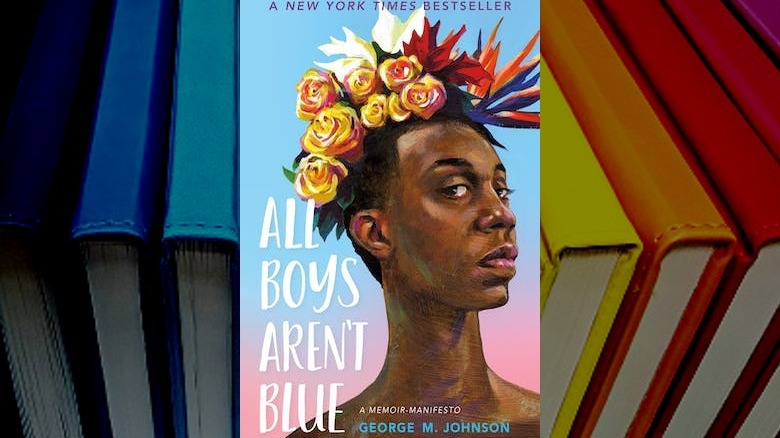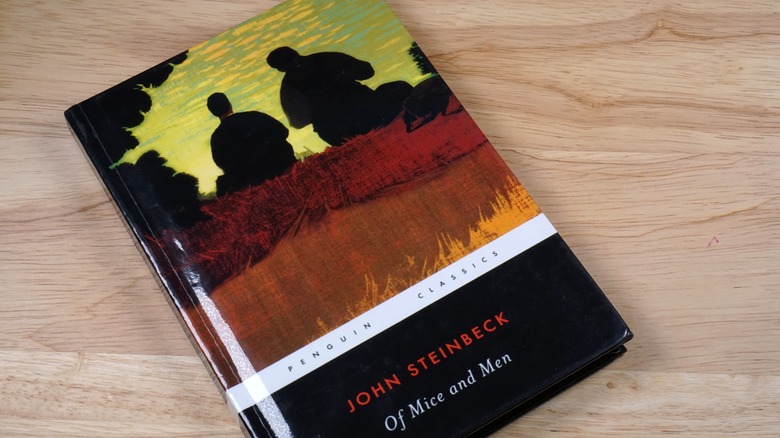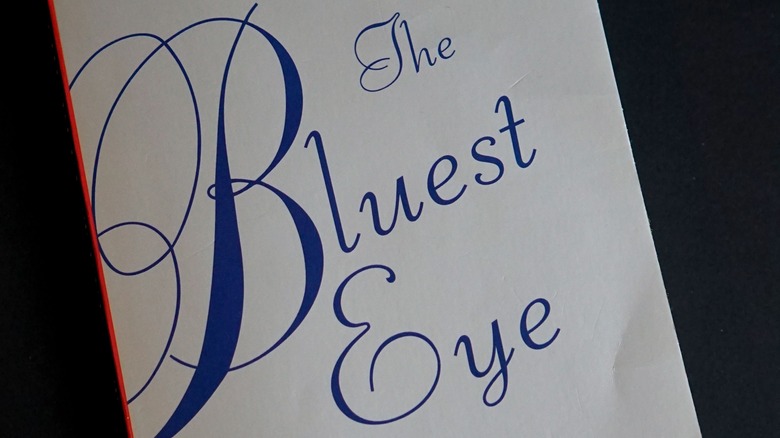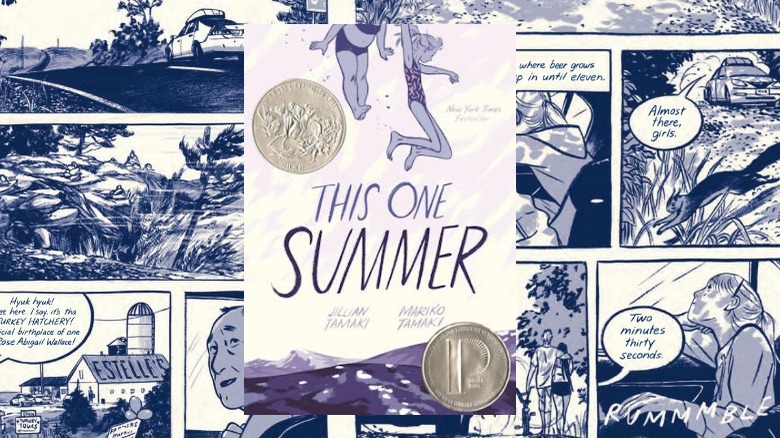The Most Banned Books In 21st-Century America
While educators and librarians attempt to provide students of all ages with books that will challenge and engage them, the books they select are sometimes seen as inappropriate by others in the community –- and some books are a lot more controversial than others. School libraries and English class curriculums have long been a battleground for larger social issues.
The most common complaints that lead to bans include sexual content, offensive language, and many other elements some consider inappropriate for children. Sometimes, these bans are specifically intended to censor content for political reasons. Books that deal with race, particularly those written by Black authors, have long been the target of book bans. Increasingly, books featuring LGBTQ+ characters have also been censored.
The American Library Association's Office for Intellectual Freedom assembles a list of the books that face the most challenges and bans each year. When someone makes a formal request to have a book taken off shelves or removed from the school curriculum, it is considered a challenge. If the book is actually removed, it has been banned. The true number of books that are challenged every year is unknown because only 3-15% of requests to remove books are ever reported, according to the ALA.
Gender Queer: A Memoir
"Gender Queer" is a coming-of-age story that explores the early life of author Maia Kobabe (who uses the pronouns e/em/eir). The narrative, which was both written and illustrated by Kobabe, depicts eir journey to understanding eir own gender and sexuality. Some argue that "Gender Queer" is currently the most banned book in the United States.
While the graphic novel has been celebrated for its honest depiction of growing up outside the gender binary, it has also regularly come under fire by those who view the sexual content in the art as inappropriate for young readers. Some have even described it as pornographic. In an interview with NBC, author Kobabe pushed back against this characterization of "Gender Queer," stating that the book could, and does, make an enormous difference in the lives of young people who are struggling to understand themselves.
"Gender Queer" is far from the first graphic novel to be deemed inappropriate for teenagers. Comic books, particularly ones with LGBTQ+ characters, have a long history of facing censorship. In the 1950s, fears that comics were corrupting children led to widespread censorship, both in the form of state-wide restrictions on the sale of comic books and codified self-censorship from the comic book industry. This Comics Code specifically restricted many controversial topics, including LGBTQ+ content. While the Comic Code Authority and the moral panic around it are no more, modern book bans continue their oppressive legacy.
The Absolutely True Diary of a Part-Time Indian
Many of the most challenged and banned books are true stories. "The Absolutely True Diary of a Part-Time Indian" by Sherman Alexie is the semi-autobiographical story of a Spokane teenager who transfers from the school on the reservation where his family lives to a high school where he is the only indigenous student. As described in a report by The Guardian, despite this young adult novel's popularity with critics, teachers, and students, it has been challenged and banned in schools all around the country.
The book is often taught in high school English classes in the United States and has been praised for presenting issues of identity, class, and race in a way that is entertaining and engaging for high schoolers. However, not everyone approves of the way that the book portrays these sensitive issues. Since 2009, there have been complaints from parents that the book includes too much profanity, as well as violence and sexual content they consider inappropriate for children. Some have also objected to what they considered blasphemous portions of the book, in which the protagonist questions the existence of God. The book also depicts racism, including the use of the n-word, which some have found unnecessarily disturbing and offensive.
Captain Underpants
Books that deal with race, gender, and sexuality are frequent targets of censorship, but sometimes a book that, at first glance, seems completely apolitical and noncontroversial is challenged. In 2012, many were shocked to discover that the most challenged book in America was "Captain Underpants," by illustrator and author Dav Pilkey.
In 2018, a later book in the series was challenged for including a same-sex couple –- but people had already been calling for bans of "Captain Underpants" for years. The series was a smash hit with elementary school children across the country, but, as noted by the ALA, it has regularly been challenged because it was "it was perceived as encouraging disruptive behavior." While there is no actual profanity in the series, throughout the years, there have been complaints that the language in the book is offensive. Some have argued that the book, which depicts a superhero who fights crime in his underwear, is too violent. In 2014, Pilkey wrote an article for HuffPost in which he argued that adults should not be trying to dictate what children should find funny.
Thirteen Reasons Why
The following slide contains references to suicide.
The young adult novel "Thirteen Reasons Why" tells the story of a group of high schoolers who listen to a series of recordings created by a deceased classmate, explaining why she chose to die by suicide. A Netflix series based on the novel sparked a national discussion about how suicide should be depicted in media, but the novel itself has always been controversial in its own right. In many cases, it has been challenged and even banned in an attempt to shield students from discussions of suicide.
The book's author Jay Asher told PBS that many teenagers have told him that reading "Thirteen Reasons Why" made them feel understood and encouraged them to seek help. But others believe that the book could actually worsen suicidal thoughts. In 2019, a study published in the Journal of the American Academy of Child and Adolescent Psychiatry (reported by the National Institute of Mental Health) determined that the release of the Netflix adaptation of "Thirteen Reasons Why" was associated with a 28.9% increase in suicide in children and teens between the ages of 10 and 17. While it is still debated whether or not the TV show was the cause, it has led to more caution around the depiction of suicide across entertainment.
If you or anyone you know is having suicidal thoughts, please call the National Suicide Prevention Lifeline by dialing 988 or by calling 1-800-273-TALK (8255).
Looking for Alaska
While "Looking for Alaska" was at one time the most challenged book in the United States — and has been removed from school curriculums and reading lists — there has also been massive pushback against banning the book.
The novel follows the story of Miles, a high schooler obsessed with famous last words, who is chasing the idea of the "Great Perhaps," as described by poet Francois Rabelais. Through his friendship with a girl named Alaska, he learns about love and grief. While the content of the novel is intentionally heavy, most of the controversy around the coming-of-age novel "Looking for Alaska" comes from a single scene. In this scene, two teenage characters are attempting to have oral sex for the first time and are ultimately unsatisfied with the experience.
As described by its author John Green, this scene is directly followed by a romantic kiss, which is depicted as being far more intimate and meaningful. Green believes that the book is often banned because officials and parents have only read the more sexually explicit scene and don't understand its meaning in the context of the full story.
Fans of the novel have struck back at attempts to ban "Looking for Alaska," sending hundreds of supportive letters to teachers who are fighting to teach the book in their classes. In some areas where the book has been banned, members of the community have actively campaigned to have it reinstated.
Harry Potter
The "Harry Potter" series is the best-selling book series of all time, young adult or otherwise. It has become a brand, with a massive catalog of films and games set in the same universe. In some areas of the United States, however, the books are regularly banned from school libraries. While it might seem strange, attempts to ban children from reading "Harry Potter" are part of a long history of the censorship of fantasy.
The "Harry Potter" series has become more controversial in recent years as the transphobic views of its author J.K. Rowling have become more widely known, but instances of "Harry Potter" being banned long predate the disturbing revelations about Rowling. According to a report shared by the ACLU, the majority of complaints about the series are about magic. Some consider the story, which centers on a young wizard named Harry Potter, attending a magical school, to be anti-Christian.
Those opposed to "Harry Potter" have described the series and its depiction of witchcraft as satanicand dangerous to children. While this might seem bizarre to those familiar with the books, which include no hint of Devil-worship, it is part of a pattern of censorship in the United States. During the "Satanic Panic" of the 1980s, there was widespread fear of fantasy content, in particular the role-playing game Dungeons and Dragons, which the BBC reported was widely condemned by Christian organizations as making children vulnerable to demonic possession.
Out of Darkness
Many books are banned based on specific language or themes, without considering why the author chose to include them. One of the best examples of this phenomenon is the censorship of "Out of Darkness," by Ashley Hope Pérez.
The novel aims to present an unwavering look at the painful reality of life in the historic United States, in a way that is still relevant to modern students. "Out of Darkness" is set at the time of a tragic 1937 explosion (which killed hundreds of people in a small Texas town), but primarily deals with more personal tragedies young people face, Pérez told NPR.
The novel follows the story of two teenagers falling in love. Because one is Black and the other is Latina, they face prejudice and hardship. For the first six years after its publication, the book went unchallenged. Then, in 2021, an out-of-context snippet of the book caused a flood of outrage and controversy.
A video of a parent reading a section of "Out of Darkness" at a school board meeting went viral, and soon, it was being pulled from school libraries around the country. The short passage contained sexual content, and some were calling it pornographic. Pérez is quoted by The Columbus Dispatch as explaining that the section which had offended people was intentionally offensive. The characters are being vulgar, crass, and racist, and what they're saying is condemned and critiqued in the book.
The Hate U Give
Young adult novels deal with issues that their young readers may also be struggling with. When those issues are also at the heart of political debates, novels can become political scapegoats. "The Hate U Give" is an overwhelmingly popular YA novel, following a Black teenager named Starr who becomes an influential activist after her friend is murdered by a police officer. The book was included on many high school reading lists around the country, but complaints from police departments and parents have led to some districts choosing to ban the book.
While some complaints have specifically cited depictions of drug use and profanity as the reason the book is inappropriate, the novel's message about race in America is what has made it so controversial. In an interview with Entertainment Weekly, author Angie Thomas stated that people's fears that children aren't ready to learn about police brutality are misguided, saying that while white families may not be discussing the issue, police brutality is a reality for Black children in America.
All Boys Aren't Blue
The memoir "All Boys Aren't Blue" describes author George M. Johnson's experiences growing up as a Black and queer person. Johnson (who uses they/them pronouns) told NPR that many students have personally told them that reading the book made them feel understood, and even inspired them to stand up to abuse. Despite this, some school districts have banned "All Boys Aren't Blue," deeming its LGBTQ+ content inappropriate for students.
While the book is widely beloved, Johnson has said they aren't surprised there are people who don't want it to be read. While the book is just an account of one person's experiences, Johnson explained that they view their writing as a kind of activism and a way to advocate for other queer people. In an interview, Johnson said they suspect many people who want the book banned haven't read it, and simply object to everything that has to do with the LGBTQ+ community. Whether or not critics of "All Boys Aren't Blue" have actually read the book, it certainly is true that many of the books that are widely banned in the United States deal with race and LGBTQ+ issues.
Of Mice and Men
John Steinbeck's famous novel, set during the Great Depression, follows two men, one of whom has an unspecified developmental disorder, as they try to find work and survive the economic turmoil. It is considered an American classic and has been regularly studied in high school English classes for decades, but the novel has always been controversial. The nature of those complaints, and who is making them, has changed dramatically over time.
As detailed by the American Library Association, the first attempts to ban "Of Mice and Men” started in the 1970s. One of the earliest challenges against the book came from the infamous hate group the Ku Klux Klan, which complained that the book used coarse language and was blasphemous. In 1989, the book was challenged because Steinbeck himself had fallen out of favor in some circles, and was seen as unpatriotic. By the early 90s, there were many complaints that the book contained slurs including the n-word, and had an offensive depiction of developmental disorders.
The Bluest Eye
Toni Morrison's debut novel "The Bluest Eye" has been regularly challenged across the United States since it was published in 1970. Some have deemed the book too graphic, disturbing, sexually explicit, or communist. The novel is graphic and deals with sensitive subjects (including rape), but that is exactly why educators have been studying it in their classrooms for decades.
"The Bluest Eye" provides an unflinching look at the horrific reality many young people face. The novel follows the story of a 10-year-old Black girl, growing up in Ohio, who wishes that she had paler skin and blue eyes. In addition to depicting the impact of racist beauty standards, it includes scenes of child abuse and rape. While its critics fear that the content is too intense for students to read about or understand, in an interview with PBS, one educator reported that after reading "The Bluest Eye," multiple students reported they had personally suffered some of the same abuses as the main character.
While "The Bluest Eye" is regularly challenged because of the sexual content and violence, many consider it to be a part of a pattern of books that deal with race being banned from schools.
If you or anyone you know has been a victim of child abuse or sexual assault, help is available. Visit the Rape, Abuse & Incest National Network website, contact RAINN's National Helpline at 1-800-656-HOPE (4673) or the Childhelp National Child Abuse Hotline at 1-800-4-A-Child (1-800-422-4453) or their live chat services.
This One Summer
Whether or not a book is appropriate for its intended audience is one of the most common debates when it comes to banning books. Obviously, in order to make that decision, it's necessary to know who the intended audience actually is. In some cases, however, misunderstanding who the book was written for has led to bannings -– like with "This One Summer."
"This One Summer" is a coming-of-age graphic novel about a teenage girl whose annual summer vacation feels different this year, not because the beach has changed, but because she herself is changing. The comic, illustrated by Jillian Tamaki and written by Mariko Tamaki, was critically acclaimed and won numerous awards, including being shortlisted for the prestigious Caldecott Medal. As reported by the Comic Book Legal Defense Fund, this particular award caused the misunderstanding which would make "This One Summer" the most banned book of 2016.
The Caldecott Medal traditionally is awarded to picture books for children, and many school librarians consistently order all the books honored each year. The vast majority of these books are intended for children younger than 8, but "This One Summer" is intended for people over the age of 12. In addition to LGBTQ+ characters, which frequently make books a target for censorship, the book was challenged for including drug use, strong language, and sexual content. While these topics seemed out of place in a book for elementary school students, "This One Summer" was always intended for young adult readers.

